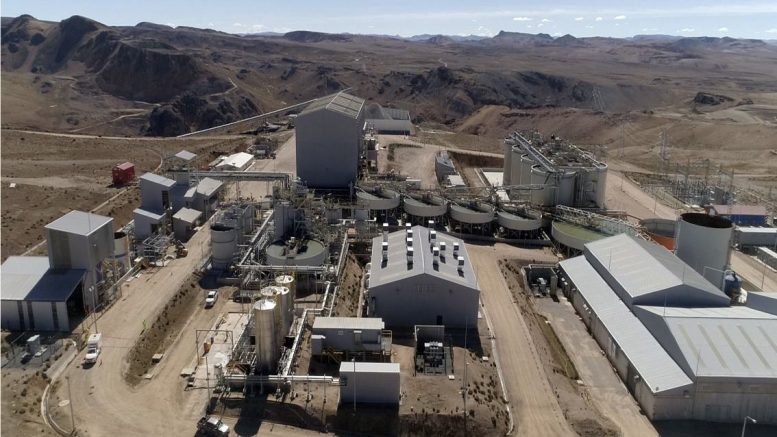Peru appears to have backtracked on a decision announced on November 19 that it would have forced the premature closure and block extensions of Hochschild Mining‘s (LSE: HOC; US-OTC: HCHDF) Pallancata and Inmaculada mines on environmental grounds.
The unilateral decision to close and block the mines gave foreign investment a bloody nose.
The policy reversal followed mere days after the initial announcement amid an international outcry, with Hochschild vowing to fight the “illegal” one-sided decision that undermined its investment confidence in the jurisdiction.
On November 24, the Peru government issued a statement to alleviate uncertainty about the closure of Pallancata and Inmaculada.
“In this framework, and in relation to the latest events, we discard the closure and request for unilateral withdrawal of the operations of the mining units, which comply with the legal requirements and conditions established in the national and sectorial legislation, and which have the permits,” a translated version of an official government release stated.
“The government reaffirms its absolute and unrestricted respect for fundamental rights, the current constitutional and legal framework and freedom of business, in a context of stability and legal security, based on the principle of predictability, for private investments (small, medium and large), and improvement of the social and environmental environment.”
BMO Capital Markets commented in a November 25 research note that the announcement brought some relief on what it previously described as a hastily made decision. In the bank’s view, “the government’s credibility (and motives) may be called into question by investors, making it more challenging to make a case for higher multiples on the [Hochschild] stock.”
“We think some investors may be feeling ‘once bitten, twice shy’ given the government’s handling of this situation,” said mining analyst Ryan Thompson.
Hochschild reported on November 22 it had learnt via media reports that Peru’s head of cabinet, certain vice-ministers and regional authorities in the town of Coracora in the Ayacucho region had signed minutes of a meeting that detailed alleged environmental complaints.
The minutes also stated that a commission had been established to negotiate the timetable and terms for the closure of specific mining projects in southern Ayacucho, including the company’s Pallancata and Inmaculada mines.
According to Hochschild, the Peruvian head of cabinet subsequently indicated that approvals would no longer be granted to facilitate additional mining or exploration activities concerning these mining operations.
Hochschild said at the time it had not received any formal communication from the government regarding this matter. Still, the news was enough to scuttle the value of the company’s London-listed shares, sending them down nearly 60% in early London trading on November 22.
Reuters also reported at the time that Peru’s Prime Minister Mirtha Vasquez had said four mines in the nation’s Ayacucho region would be closed “as soon as possible.”
However, Hochschild said it would defend its position in Peru and asserted that its mines operated under the “highest environmental standards.” “Our goal is to continue investing in Peru,” said Hochschild chief executive Ignacio Bustamante. “However, given the illegal nature of the proposed action, the company will vigorously defend its rights to operate these mines using all available legal avenues.”
He said the company would seek to enter dialogue with the Peru government to resolve any “misunderstandings” concerning its mining operations. The communities close to the affected operations and the trade unions representing the operations’ workforce had issued formal statements supporting Hochschild.
The company employs more than 5,000 people directly and about 40,000 people indirectly in Peru. In a November 25 statement, it said that following clarification from the Peru government, “the company’s operations in southern Ayacucho, Pallancata and Inmaculada will continue to operate under the existing legal framework.”
Hochschild’s Inmaculada mine is the company’s most significant, representing more than 60% of its cash flows, according to its latest 2020 annual report. Both the mines account for the bulk of the company’s output.
In 2020, the Immaculada mine produced 15.14 million silver-equivalent ounces, and the Pallancata mine produced 4.79 million silver-equivalent ounces.
A BMO research note at the time said Peru’s initial announcement would probably cast a cloud of uncertainty over the future of the operations. “Although Hochschild will not go down without a fight, it is very difficult for us to envision a scenario where the stock outperforms, given the current government’s stance on the operations; we are therefore moving to the sidelines with a ‘Market Perform’ rating until more certainty emerges,” said Thompson in a November 22 note.
Fellow BMO analyst Colin Hamilton said the renewed uncertainty these developments cause would likely further dissuade new capital investment in mining in the country at present.
Hochschild shares tumbled on the news and were down 57.5% at 70 pence each by 08:30 GMT on November 22. The share price has recovered somewhat since then, trading at 132.2 pence at press time.


Be the first to comment on "Peru’s mining policy snafu gives investment a bloody nose"